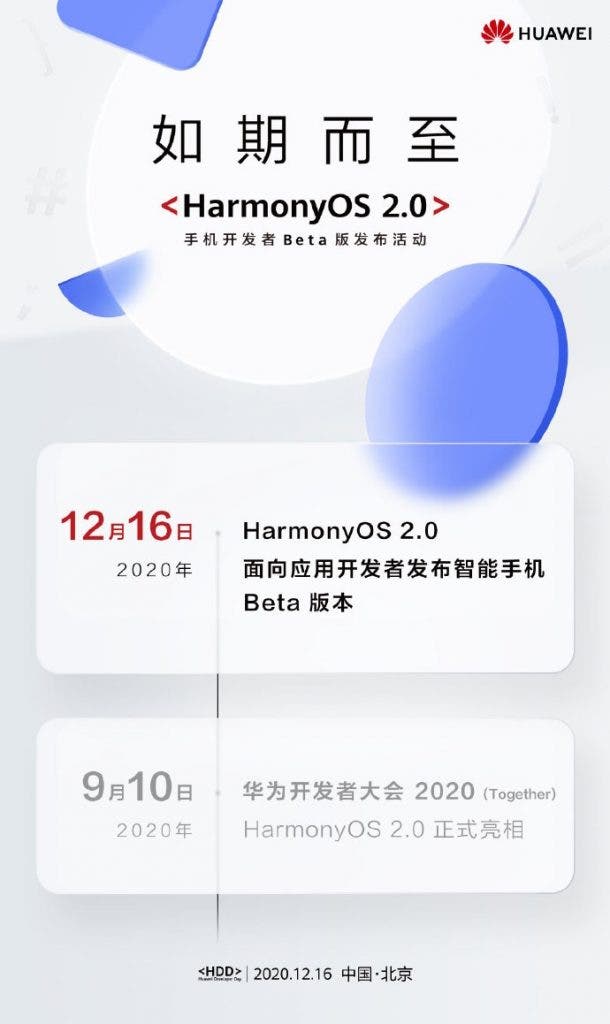The Huawei Harmony OS 2.0 is official and now available for some Huawei Phones. After the event, Yang Haisong, vice president of Huawei’s consumer business software department, said in an interview with the media that as of today, the number of developers participating in Harmony development projects exceeds 100,000. In addition, it has about 1o hardware partners. Furthermore, industry reports claim that looking at the current progress, all Huawei self-developed equipment will upgrade the Harmony system next year. This means that consumers do not need to purchase new equipment to experience the Harmony system.

At the same time, next year Huawei will also release smartphones based on the Harmony system out-of-the-box. Earlier today, Wang Chenglu, president of Huawei’s consumer business software department, said that Midea, Joyoung, Boss Appliances, and Puffin Technology have been equipped with Harmony OS this year. Huawei’s goal is to cover more than 100 million devices from 40+ mainstream brands by next year.
Presently, the smartphones that can get Harmony OS 2.0 update includes Huawei P40, P40 Pro, Mate 30, Mate 30 Pro, and MatePad Pro devices. In addition to its availability OTA, this update also supports Android applications. Technically, Harmony OS is just a change in the bottom layer of Huawei’s previous system. This means that Android + EMUI will now work as Harmony OS2.0 + EMUI. According to Huawei’s official website, users on the HarmonyOS Beta version can roll back to the EMUI 11 stable version. This can be done using Huawei Mobile Assistant (HMA).
Harmony OS 2.0 Mobile developer beta main features
- Brand new mobile phone UI controls, adding 50+ UI controls for developers to develop mobile HarmonyOS applications. It also unifies the UI interaction experience of multiple devices.
- The HarmonyOS application framework supports mobile phones and rapid migration. It also supports swift connection and circulation. There is a no-installation loading of HarmonyOS applications on multiple devices.
- Provides Windows and Mac platform development and compilation toolchain experience. This is also convenient for developers to quickly develop HarmonyOS applications.
- Provides 40+ Sample Codes for mobile developers. This is convenient for developers to quickly understand and adapt to HarmonyOS interfaces and development methods.
- Distributed capability interfaces such as multi-modal perception support multiple usage scenarios.
- Also offers a standard input method framework and capabilities
- Provide standardized telephone system interface capabilities.
- Also uses a barrier-free development framework
- Provides standardized distributed data management capabilities. Developers can also call standardized distributed DB interfaces to realize real-time data synchronization between devices.
- Enhance the account system capabilities. It also includes accountless devices into the HarmonyOS system.





